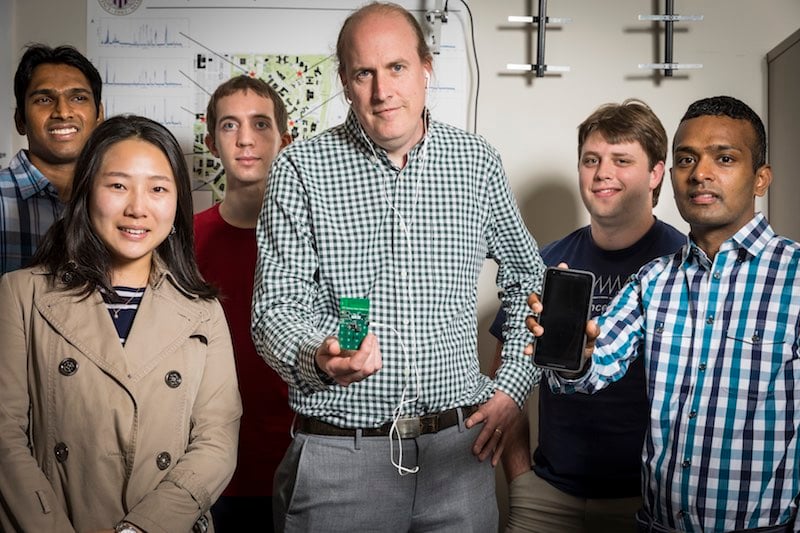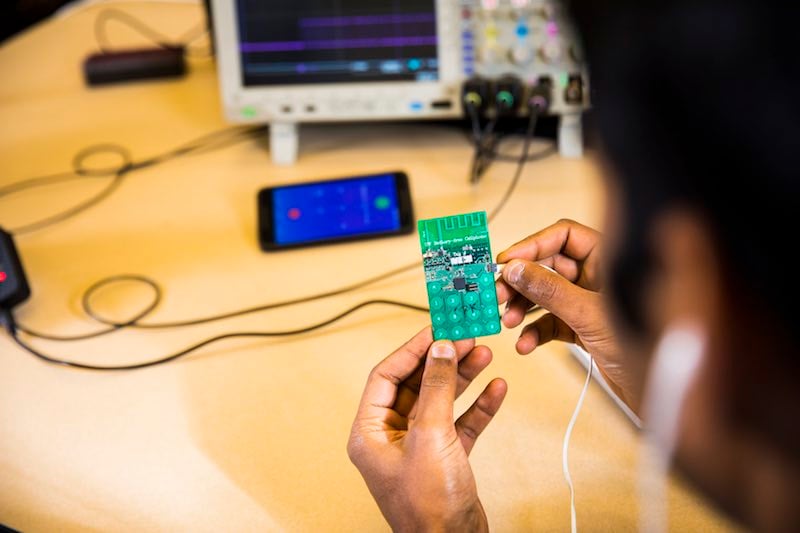Researchers Have Developed the World’s First Battery-Free Cellphone
Have you ever stranded on road with your cellphone left with zero battery charge? We all had experienced this at least one time in our lives. Well, we have some good news in store then. Researchers have developed a working phone with absolutely no battery. Yes, you heard it right! A simple cellphone developed by […]

Have you ever stranded on road with your cellphone left with zero battery charge? We all had experienced this at least one time in our lives. Well, we have some good news in store then. Researchers have developed a working phone with absolutely no battery. Yes, you heard it right!
A simple cellphone developed by researchers at the University of Washington is the first workable model without a battery, said the recently published paper in Proceedings of the Association for Computing Machinery of Interactive, Mobile, Wearable and Ubiquitous Technologies.

[Image Source: Mark Stone/University of Washington]
How does this battery-free cellphone work?
The co-author of the paper and an associate professor at the University of Washington, Shyam Gollakota said, “We’ve built what we believe is the first functioning cell phone that consumes almost zero power”. Underlying the effort to develop this technology he commented, “To achieve the really, really low power consumption that you need to run a phone by harvesting energy from the environment, we had to fundamentally rethink how these devices are designed.”
The tiny vibrations generated through the phone’s microphone and speaker when a person speaks are translated into motion with the help of an antenna. The antenna then converts them to analog radio signals recognizable to the base station. Hence, this process of radio signals does not require power to charge any component.
The phone uses a single button to switch between receiving and sending calls. The turning point is the analog encryption of voice rather than digital, which other phones use. With this technology, very less power is required for transmitting voice and messages.
[Image Source: Mark Stone/University of Washington]
The cell phone is made up of all commercially available parts. The keypad on the phone is very basic containing only 0-9 digits, including * & # buttons. Headphones are used as speakers since it does not have one. Interestingly, the device is capable of taking Skype calls.
“The cellphone is the device we depend on most today. So if there were one device you’d want to be able to use without batteries, it is the cellphone,” said Joshua Smith, lead faulty & professor in both the Allen School and UW’s Department of Electrical Engineering. He added, “The proof of concept we’ve developed is exciting today, and we think it could impact everyday devices in the future.”
Presently, the prototype powers on as little as 3.5 micro watts, harvesting through an ambient source and solar cells ingrained in the phone. This technology is already used in RFID, which encodes existing radio signals while sending and receiving. Right now, the operating distance is only 50 feet away from the base station. With the use of commercial towers, the range can be enhanced further.

[Image Source: Mark Stone/University of Washington]
Future of battery-free cellphones
Though the device is basic, it can be developed further to build a robust phone with premium features existing in today’s smartphones. Researchers want to make calls secure and increase operating range as next step.
Who knows, we may get rid of charging our smartphones every day. The future is always exciting and all we need to do is just wait and watch!
Sources: University of Washington, The Telegraph
SEE ALSO: You Really Need to Stop Force Quitting Apps on Your iPhone
 SHOW COMMENT ()
SHOW COMMENT ()









